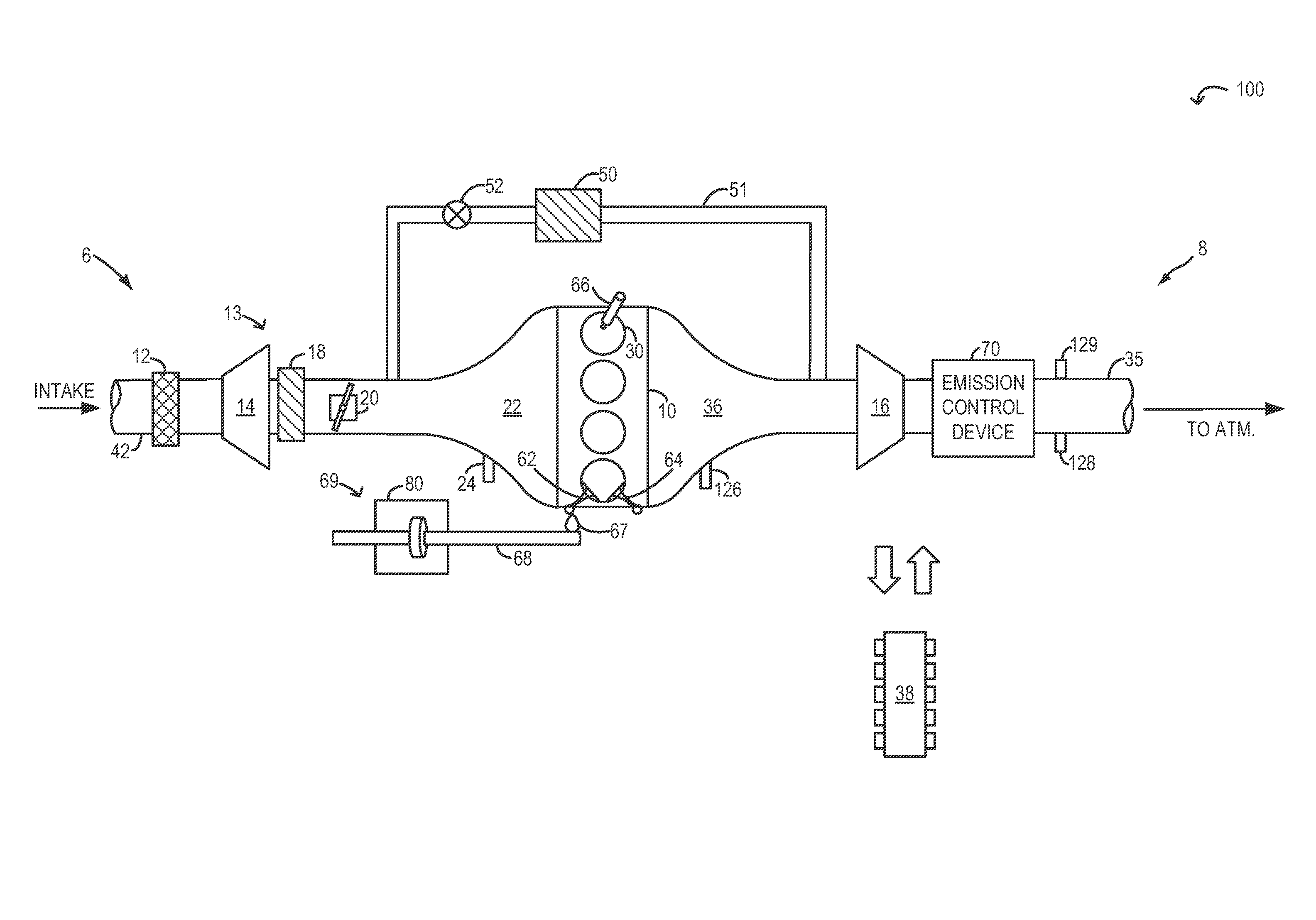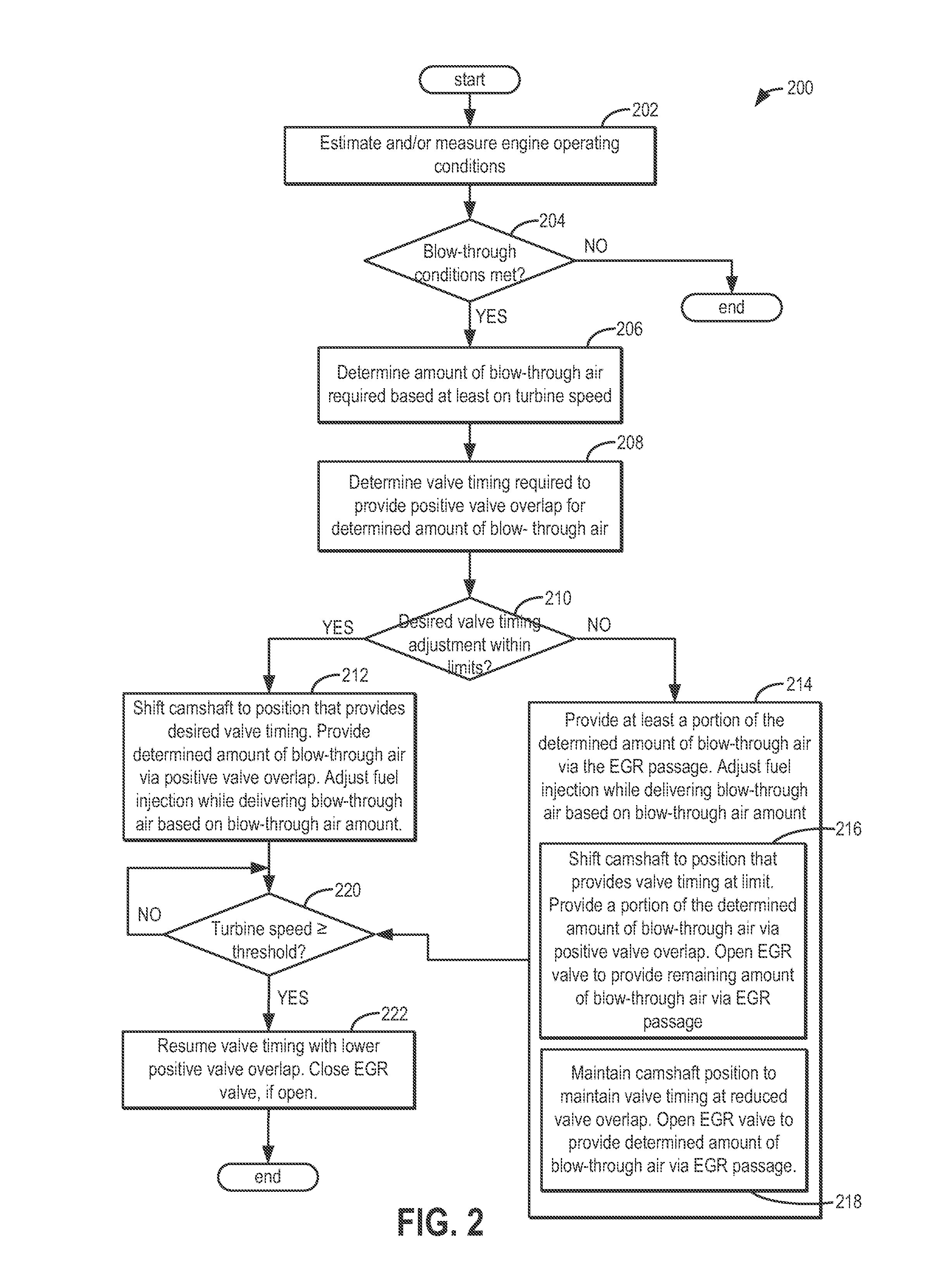Coordination of cam timing and blow-through air delivery
a technology of cam timing and blow-through air, which is applied in the direction of electrical control, process and machine control, etc., can solve the problems of undesirable power lag, torque may not be available, power, fuel efficiency, emissions-control performance of a boosted engine may suffer, etc., to achieve greater fuel efficiency, lower emissions, and power. the effect of reducing emissions
- Summary
- Abstract
- Description
- Claims
- Application Information
AI Technical Summary
Benefits of technology
Problems solved by technology
Method used
Image
Examples
Embodiment Construction
[0013]Methods and systems are provided for directing an amount of intake air from an intake manifold to an exhaust manifold of an engine system (such as the engine system of FIG. 1) via engine cylinders using positive valve overlap and / or via an EGR passage. In response to a tip-in, an engine controller may be configured to perform a control routine, such as the example routine of FIG. 2, to adjust a variable cam timing device to adjust intake and / or exhaust valve timings of an engine cylinder towards positive valve overlap so as to provide an amount of blow-through air via the cylinders. However, if the VCT adjustment degrades engine torque output and combustion stability, the controller may be configured to direct at least a portion of the blow-through air via an EGR passage of the engine system. The controller may also determine a ratio of blow-through air delivered via positive valve overlap relative to delivered via an EGR passage based on engine operating conditions. A fuel in...
PUM
 Login to View More
Login to View More Abstract
Description
Claims
Application Information
 Login to View More
Login to View More - R&D
- Intellectual Property
- Life Sciences
- Materials
- Tech Scout
- Unparalleled Data Quality
- Higher Quality Content
- 60% Fewer Hallucinations
Browse by: Latest US Patents, China's latest patents, Technical Efficacy Thesaurus, Application Domain, Technology Topic, Popular Technical Reports.
© 2025 PatSnap. All rights reserved.Legal|Privacy policy|Modern Slavery Act Transparency Statement|Sitemap|About US| Contact US: help@patsnap.com



